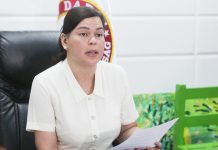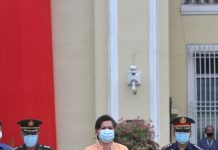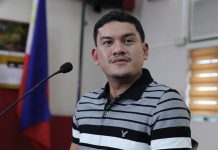This one is for the books, but if tourism officials had their way, select policemen in every major city would be trained to behave more courteously, be more visitor-sensitive, and even act as tourist guides in their respective localities.
This doesn’t mean the policemen would abandon their regular duties altogether, although carrying a gun while on “tourist” duty would be a no-no. And so would directing traffic and kicking off a car chase.
What they would become, according to Arturo Boncato, Jr., regional director of the Department of Tourism-11, are “ambassadors of goodwill. With adequate orientation, they will be versed in their areas’ tourism potentials, even more than the man-on-the-street does.”
The DOT’s Top Cop Program began in November last year. The department recruited select policemen from Manila, Baguio, Cebu, and Zamboanga as pilot areas. Excluding Davao, some 240 men and women in the police force have undergone specialized training.
One such seminar was held in Davao last week in Camp Catitipan. Some 100 policemen jampacked a function room for a lineup of tourism presentations. It isn’t every day that cops are briefed on why Koreans were the country’s Number One tourists, or why foreigners prefer to visit the country for their dental and medical appointments.
But there they were in the room, in full uniform sitting in rapt attention.
Boncato says that it’s particularly welcome for the Top Cop Program to be launched in Davao. The city has been associated only too frequently with so-called extrajudicial killings it seems the stigma has stuck. “But if we continue to try and overcome this unfair tag, and if we have faith in our uniformed lawmen, then we can eventually improve our image before the larger community,” he says.
Of course, it won’t be easy. The DOT intends to bring the program to 14 priority destinations across the country, not including “special requests” from Siargao Island and the Aviation Security Command among a few others.
The courses stretch to as long as six months. They dwell on cultural sensitivity, language, tourism facts and figures, and situationers on their respective destinations.
The tasks may seem daunting, but in Quezon City, the program has already rolled out with tourist policemen manning improvised structures in select street corners. Boracay had even experimented in it years ago.
These alone make Maria Rica Bueno optimistic. Bueno, director of the DOT’s Office of Tourism Standards and Regulations in Manila, says there’s no stopping the Top Cops from succeeding.
She mentions three things that ensure program success: First, local government units enjoining their constituents to support the program; second, the private sector seeing the strategic value of the program and providing much-needed logistical support; and third, the program providing incentives to the best performers by rewarding them with sponsored trips to coveted destinations.
It’s a program “whose time has come,” Bueno says, noting that the idea was first broached within DOT circles as early as 2005. Four years later, the Tourism Act of 2009 enshrined the provision that the Philippine National Police put up permanent tourism policemen.
With Bueno’s optimism and Boncato’s tenacity, it looks like the program will be turning full circle.






